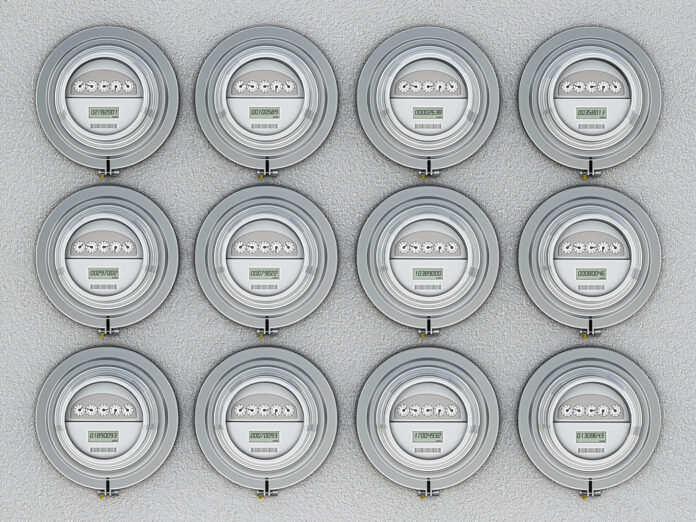Massive IoT – or massive machine-type communications (mMTC) – is all around us. We live in a vast connected ecosystem of data-gathering applications that draw on comparatively low levels of data at source but which, when aggregated by application vendor or enterprise user, is simply enormous. Think smart thermostats, alarm and access control systems for the home, smart bulbs, smart meters – you see where this is going.
Massive IoT is an information system that uses cloud and edge computing, big data, and AI to make huge amounts of data more accessible for individuals as well as for businesses, and not least energy and utilities companies. IoT sensors allow for remote monitoring, maintenance and assessment of data across a wide range of applications, including smart grids, water plants, substations, and much more.

The sheer volume of devices involved in the mMTC field, and their respective networks, place ever greater demand on network coverage, battery life, and device cost, as well as on the cost and resilience of the connectivity itself. Many of these devices are communicating through cellular 4G and 5G networks and are reliant upon long-life batteries. At the same time, we are experiencing an ‘energy trilemma’ – the inherent tension between energy affordability, energy security, and the environmental impact of most of the energy consumed on the grid.
A perfect storm perhaps, but advancements in technology have a history of providing the solutions we need. A report by the International Energy Agency expects global energy demand to increase by 37 percent by 2040 and in a world that’s so connected, massive IoT can be the catalyst to ensure utilities are more efficient – not least through periods of geopolitical unrest and instability. On the flip side there are countless benefits.
Benefits and challenges
Remote monitoring in smart grids reduces human error and lost time in manual visits and processes, which can have a huge impact on operational efficiency and the bottom line. Likewise, predictive maintenance allows utilities to forecast when equipment may fail, so servicing can be carried out to avoid costly downtime. For smart meters, data is collected, sent, and evaluated in real-time by the utility company, rather than once the energy is consumed.
All this allows utilities to provide real-time alerts around meter, grid damage or outages and adjust pricing and supply based on data insights if necessary. It can aid the monitoring and control power quality, and increase energy savings for the customer and install software updates, again in real-time.
With the ever greater adoption of mMTC technologies and solutions comes a number of challenges, inevitably. On the one hand there is capital outlay for utility operators, not least the modernisation or installation of new hardware. However, most legacy hardware doesn’t need to be changed immediately. Furthermore, while battery-life tends to be very long, the cost to replace millions of batteries in the field for many utilities may not seem a viable option.
This highlights a scalability challenge for massive IoT programmes within the utilities sector: the ability to quickly adapt to surges, peaks, and troughs with the transfer of data, and, with many smart meters located in inaccessible areas such as basements, accessibility to access data where indoor connectivity may be an issue. Plus, of course, there is the challenge of data security – to ensure data is sufficiently available in the cloud and also secure from the reach of hostile parties.
LoRaWAN and satellite
To combat some of these challenges plug some of these gaps, suppliers need to ensure ubiquitous and seamless connectivity from the grid or meter back to the provider. Low-power wide-area (LPWA) network technologies such as LoRaWAN help to solve many of the needs of massive IoT in transmitting sensor data to a central gateway, and then forwarding data packets as raw or processed data using fibre, satellite, or cellular backhaul.
LoRaWAN is very cost effective and enables utilities to embed arrays of monitoring sensors and instrumentation into their assets to constantly monitor and transmit key parameters such as temperature and fluid levels. With LoRaWAN, utilities can implement preventive maintenance, offering greater value for their customers whilst reducing operational costs and strengthening the customer relationship.
However, it is estimated that only 10 percent of the earth is supported by cellular, whereas a satellite network (from Iridium, for example) covers all of it – 100 percent. Automating control across the entire network is enabling companies to respond rapidly to outages, fluctuations, and peaks in demand. Clearly, none of this is possible without reliable data and fail-safe connectivity.
Meanwhile, mMTC via satellite is helping utility workers in the field, where lone operators are constantly visiting remote areas outside normal cellular coverage.
As utilities and their customers navigate the energy trilemma, it is vital that mMTC is not only helping the customer to be efficient with their energy consumption but that providers are able to ensure that both the grid and smart meters are delivering the data required to manage peaks and troughs in demand without costly downtime. Given the wide geographical footprint across which Utilities need to operate, satellite is becoming increasingly key.
In sum, massive IoT is providing utilities with the real-time information they require while the grids of tomorrow will become even more connected as infrastructure. Satellite communications will be pivotal to this now and in the future, because without a connection, nothing is smart.
About Ground Control
Established in 2002, Ground Control uses satellite and cellular technology to connect people and things, particularly within hard to reach, remote areas – from wind farms to fishing fleets and first responders to forestry workers. Ground Control designs and builds its own hardware covering the entire spectrum of connectivity requirements, with manufacturing facilities in the UK and the US. The company’s long-term partnerships with airtime providers such as Inmarsat and Iridium mean that it has access to the most competitive and comprehensive airtime plans, taking full advantage of their service evolutions in ways that make Ground Control’s customers’ challenges easier to solve. Ground Control works within a range of government and industry sectors, including the oil and gas, utilities, first responders, maritime, environment, and agriculture sectors.

